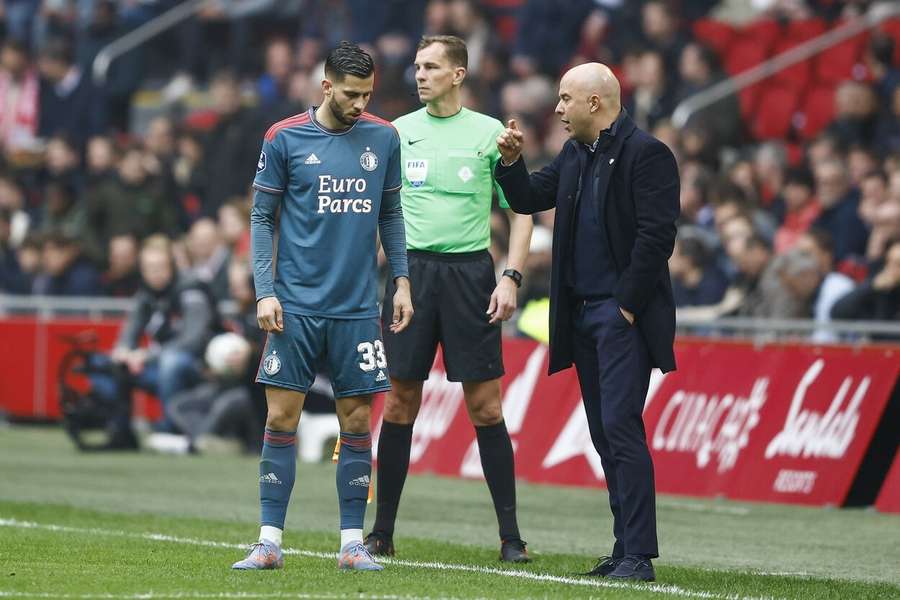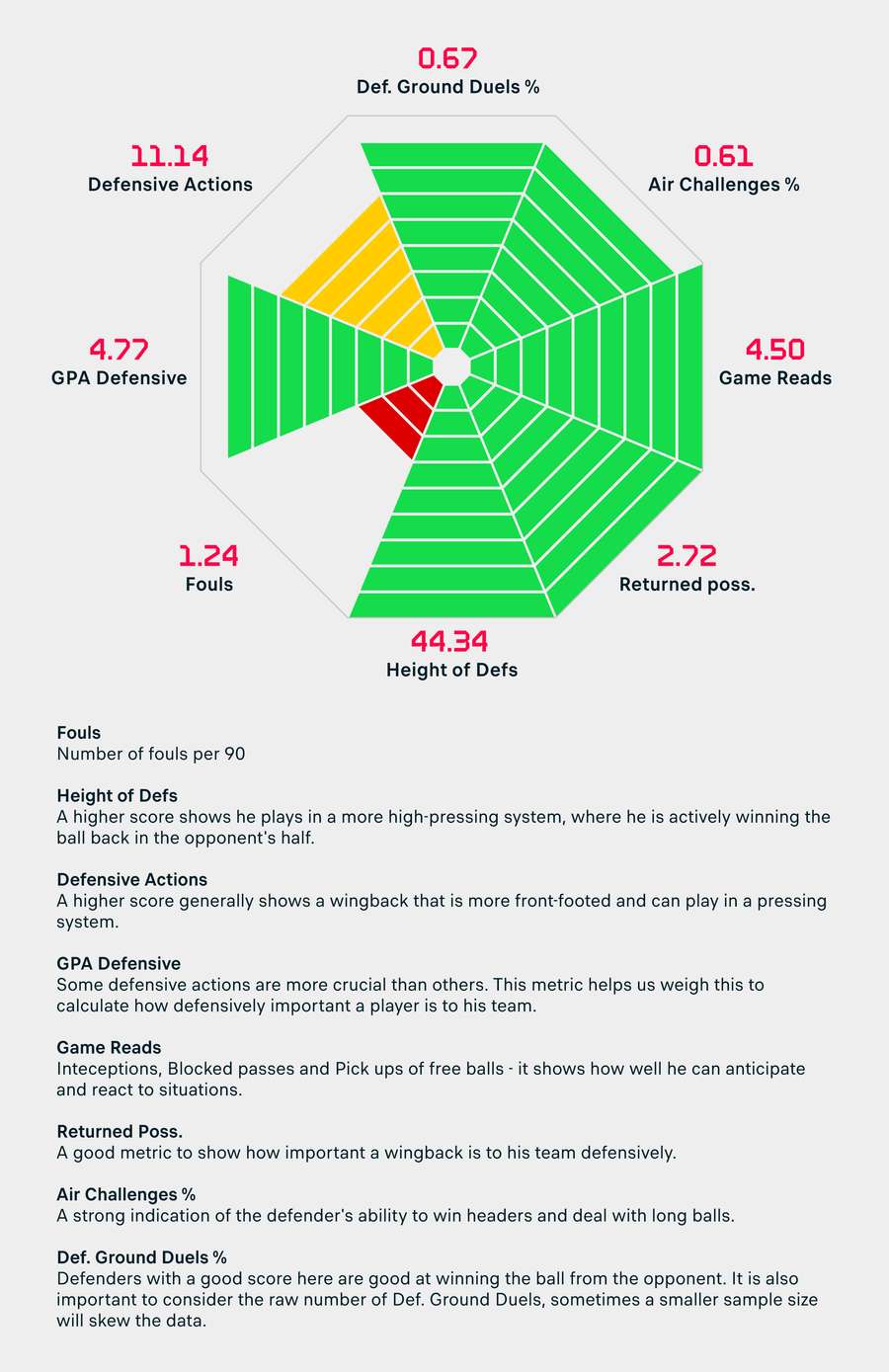Data-driven manager of the month: Arne Slot and the win that might have clinched the title

On the very first of March, Feyenoord played an away game against Heerenven and won by the narrowest possible margin thanks to Gimenez's goal in the 80th minute. In the following home game, they also managed to beat Groningen 1-0, but this time they visibly dominated the pitch and did not win by a bigger margin only because of poor finishing. On expected goals this match ended 2,9 vs 0,2. This was followed by a great performance and a draw against Shakhtar Donetsk in the first game of this double header and then a home win against Volendam.
But the big things started to happen at the end of the month. The home rematch with Shakhtar Donetsk ended in a goal showdown that saw Feyenoord advance to the next stage of the Europa League. Of the 10 shots on target, 7 ended up behind Trubin's back, and with the exception of one penalty, they were all medium to long range finishes. The confidence gained came in handy ahead of the most important game of the season.
Championship match?
Where Spain has its "El Clasico" between Real Madrid and Barcelona, the Netherlands has "De Klassieker" between the two biggest clubs from the two biggest cities. Feyenoord went into the March match against Ajax with an unflattering record, having not won on their pitch since 28 August 2005 (1-2). Since that match, Ajax have won 14 of their 16 home matches and have kept 9 clean sheets.
More importantly, however, was how much a win in this game could help both teams to increase their chances of winning the title. Ajax had 7 wins in a row and were in a very good position in the title race. If Ajax won, Feyenoord would still have a 48% chance of winning the title, however, it would already be a much worse prospect compared to how the balance of power would change if the visitors won. Mathematical models predicted that if Feyenoord won, their chances of winning the title would rise to a staggering 90%...
The plan
Both coaches had a similar plan. Namely, never let the opponent play through the middle, wait for a poorly executed pass, get the ball and immediately go on the counterattack. In this way, Orkun Kokcu won the ball in the 5th minute and from a fast break after Bassey fell asleep, striker Santiago Gimenéz sent Feyenoord into the lead. Ajax, playing well, managed to equalise from a deadball situation and, moreover, coach Heitinga soon found a recipe for a crowded and dysfunctional midfield for both teams.
The recipe was long balls. The long throw-ins, especially to Bergwijn, worked very well. The first two breakaway situations didn't end in goals yet, but especially in the second case not much was missing - the action went again through the left side and ended up with a save by left-back Quilindschy Hartman at the last possible moment.
Let's stop with Hartman for a moment. He has only made his way into the starting lineup in recent months (he made his debut for the first team in the current season). In the data so far, he has been giving great performances both offensively and defensively, and after Malacia's departure to Manchester United, the coaching staff has once again found a runner with great potential. However, in this game Hartman was supposed to defend Ajax's biggest weapon, Mohammed Kudus playing on the right wing, and he struggled with that task. Already in the 17th minute he received a yellow card and in the 23rd minute he was cautioned for an foul on the Ghanaian speedster. That's when Slot's strength - reacting to the flow of the match - came into play. He substituted his superstar a few minutes later, despite saving his team from a clear goal.

Nevertheless, Ajax continued to take advantage of long balls behind the defence, and one of them essentially made it three-all when Bergwijn worked the ball behind the defence and put it underneath Tadic in the whitewash, who converted between the legs of Hancock.
The comeback
That being said, the ability to react correctly to the flow of the game is Arne's greatest strength. This season, Feyenoord are tied for first place, along with Scottish Rangers, in points gained from games in which they were losing (21 points). The long ball problem has been solved by more active and controlled possession, with Hancko and Trauner in particular improving their distribution dramatically for the second half. They stopped playing it safe and instead of opting for risky and effective through passes, they concentrated on passing through the opposition in a controlled manner and spinning the play through defensive midfielders Wieffer and Kokcu.
From one such situation, Feyenoord equalized in the 51st minute. After several deflected balls, Hancko exchanged the ball twice on the left side and sent a simple pass to the right to Jahanbakhsh, who sent a shot to the front post and Szymanski scored.
A change of plan in the form of more controlled passing worked throughout the second half and Ajax only got four attempts compared to Feyenoord's ten. A rehearsed corner then brought victory to Slot's selection - the best player on the pitch Kokcu sent a centre to the front post, Hancko extended there and Geertruida celebrated his 100th game for Feyenoord with a goal.
Still only 22 years old, Kokcu has been absolutely pivotal in Feyenoord's title campaign. He is typically a deep-lying playmaker, i.e. a deep-playing midfielder with a well-developed sense of offense. Once such a player receives the ball, he looks for penetrating passes from deep, diagonal passes or finds teammates between the opposition lines with his passes.
Our analysis shows that, along with the above mentioned passes, Kokcu often creates dangerous chances from zone 14, the central area in front of the opponent's whitewash, and his corners are also extremely important, as he proved against Ajax. In models that evaluate the contribution of a player's passing in certain areas of the pitch, Kokcu is among the league leaders in both crossing and in the final third. At the same time, he has excellent ball control and can move the ball into better positions with his runs.
